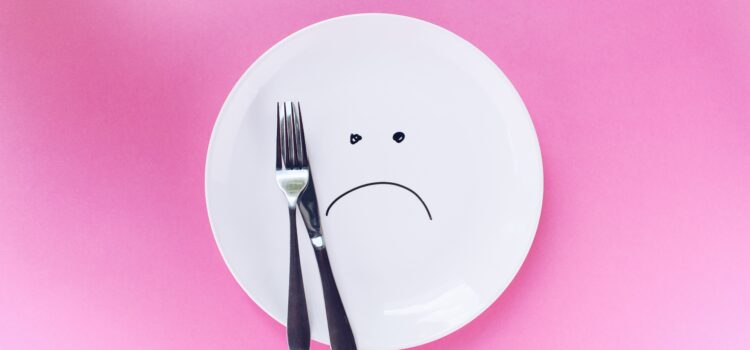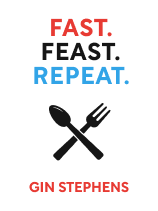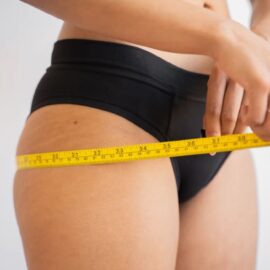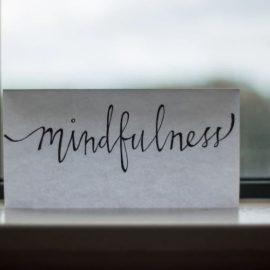

This article is an excerpt from the Shortform book guide to "Fast. Feast. Repeat." by Gin Stephens. Shortform has the world's best summaries and analyses of books you should be reading.
Like this article? Sign up for a free trial here .
What is a clean fast? What foods do you need to avoid on a clean fast?
To fast cleanly means to eat nothing that hinders the insulin-curbing and fat-burning effects of fasting. Depending on your health and fitness goals (fat-burning, muscle building, or general health), you may have more or less leeway in terms of what you can eat.
In this article, we’ll explain the “clean fast”—Gin Stephens’s approach to fasting—and her “delay, don’t deny” approach to feasting.
Fast Cleanly by Avoiding Foods or Flavors
According to Gin Stephens, clean fast provides three benefits: insulin regulation, ketosis, and autophagy:
#1: Regulate your insulin. Since insulin prevents effective fat burning, you’ll want to avoid eating, period. Further, avoid consuming any flavors—sweetness, sourness, and umami flavors all activate the insulin response.
(Shortform note: While Stephens approves coffee for her clean fast, some studies indicate that coffee consumption may briefly increase insulin levels. As such, abstaining from coffee could result in a cleaner fast than not doing so.)
#2: Activate fat-burning. Fasting burns fat by activating ketosis—using fat stores for fuel. Don’t consume anything that gives your body an external source of fuel.
(Shortform note: Healthline reports that if you want to activate ketosis, eat fewer carbohydrates. Carbs convert directly into blood glucose, which your body will use for fuel. The fewer carbs you eat, the less glucose and glycogen you’ll need to deplete each time you fast in order to reach ketosis.)
#3: Activate autophagy. Many of fasting’s benefits come from autophagy, so avoid eating anything, including vitamins and supplements. Research found that taking supplements may reduce autophagy and increase insulin levels.
(Shortform note: While fasting is the main way to activate autophagy, you may also be able to do so by following the keto diet. In short, keto involves eating minimal carbs and increasing your fat intake. This stimulates ketosis, during which autophagy ramps up—so fasting combined with keto may be the best way to regularly benefit from autophagy.)
Stephens provides the following breakdown of what you can and can’t eat on a clean fast:
| Can Eat | Unflavored water, black coffee, plain tea made from camellia sinensis, mineral, sparkling, and seltzer waters, club soda, salt and electrolytes, doctor-approved medications | According to Stephens, bitter flavors from coffee or tea don’t activate the insulin response. Nor do non-flavored beverages, salt, or medications. |
| Gray Area | Peppermint oil, herbal teas, vitamins and supplements | These items may activate the insulin response. After adapting to IF, try them out one at a time. |
| Can’t Eat | Any food, flavored waters and drinks, diet sodas, coffee creamers or fatty add-ins, sweeteners (even if zero calorie), gum, mints, breath strips, workout supplements | All of these items activate the insulin response. There’s no need to eat while fasting—that’s the point! |
(Shortform note: While Stephens asserts that you’ll only reap the full benefits of fasting by following her guidelines, other practitioners allow for some consumption during the fasting period. This is because different IFers have different goals: Martin Berkhan, author of The Leangains Method, recommends taking BCAA supplements prior to exercise—his goal is bodybuilding. To better understand how you should fast and feast, consider your own goals: Do you want to lose fat, gain muscle, or simply maintain good health? Depending on the answer, you have more or less room to compromise with Stephens’s relatively strict plan.)
Feast on Quality Foods Plus Some Treats
Stephens explains that when it’s time to eat, you can eat whichever foods you want. She recommends following her “delay, don’t deny” principle and eating mainly quality foods.
- To delay means to wait until your fast is over and it’s time to eat. Most often, this means waiting until your daily fast ends. However, you might also delay consuming a given food that would hinder your weight loss efforts—such as pizza—until you reach your goal.
- Don’t deny means that there’s no list of banned foods. When it’s time to eat, enjoy what you’d like to—whether it’s a cheeseburger or a salad is up to you.
However, don’t deny does not mean that you can eat as much as you please. If you overeat, you’ll store excess blood glucose as glycogen and fat. If you can’t empty your glycogen stores in each fast, your body won’t be able to access and burn fat as fuel. In this case, you’ll maintain or gain weight.
(Shortform note: In Intuitive Eating, Tribole and Resch recommend that you honor your hunger as a key step to healing your relationship with food. If you deny your hunger, you’ll reinforce the dieting mindset that causes yo-yoing between self-deprivation and bingeing. Instead, give yourself “unconditional permission to eat” and pay attention to your hunger signals to learn when you’ve had enough.)
While Stephens’s approach allows you to eat as you choose, the quality of your food does matter. So while desserts aren’t off-limits, you can’t exclusively eat treats and expect to feel good or lose weight. This is because not all calories are equal: 100 calories of candy is empty of nutrition while 100 calories of vegetables is nutrient-rich.
Stephens recommends using the NOVA classification system to choose what you eat:
- Food Type #1: Unprocessed or minimally processed foods—This includes whole foods such as fresh fruits and vegetables, meats, fish, nuts, and dried or crushed foods like nuts.
- Food Type #2: Processed culinary ingredients—This includes foods prepared with traditional processing methods such as milling, grinding, or churning. Flours, sugars, butters, and salts fall in this category.
- Food Type #3: Processed foods—These foods result from the combination of unprocessed foods and processed culinary ingredients, and they resemble whole foods. Think homemade bread, yogurt, tofu, or pickles.
- Food Type #4: Ultra-Processed foods—This category includes highly processed food-like items made primarily from food-derived ingredients, preservatives, flavors, and other chemical compounds. Think Cheetos, chicken nuggets, ice cream, grocery store bread, or Twinkies-style snack foods.
| The Purpose of the NOVA Classification System NOVA—a term, not an acronym—originates from a group of researchers at the University of Sao Paulo, Brazil. Developing their research and ideas in papers since 2009, the group advocates for the NOVA system to clarify the nature of ultra-processed foods and leave no room for doubt about whether they’re healthy. In their view, ultra-processed foods are by nature unhealthy and we shouldn’t eat them. The researchers argue that such “foods” are created from industrially derived and processed ingredients that leave no real food intact. They argue that a global food industry is steadily replacing traditional, less-processed diets with convenient, cheap, and heavily-processed “food products.” By creating and advocating for their NOVA system, these researchers intend to shine a spotlight on the negative effects of ultra-processed foods, which include increased obesity and type 2 diabetes. In addition, NOVA provides a framework for policymakers to assess the dietary habits of a given population and work toward positive change. |
Stephens explains that ultra-processed foods contribute to overeating and obesity, and she recommends eating them infrequently, if at all. Instead, eat mainly foods from the first three categories, shop in the produce and deli sections of the grocery store, and avoid eating things that your great-great-grandparents wouldn’t recognize as food.

———End of Preview———
Like what you just read? Read the rest of the world's best book summary and analysis of Gin Stephens's "Fast. Feast. Repeat." at Shortform .
Here's what you'll find in our full Fast. Feast. Repeat. summary :
- How intermittent fasting can help you lose weight, feel better, fight disease, and live longer
- An explanation of the cutting-edge science that supports fasting
- How to follow a four-week quickstart program to adapt to this new lifestyle






